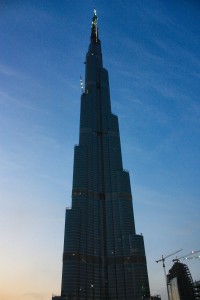
Trane has gone to great heights on Emaar Properties’ iconic Burj Dubai, having supplied and installed chillers on the 155th and 159th floors. MEP Middle East speaks to Trane lead sales engineer Farook Wahab about the logistics of this challenging project.
What is the background of the project?
Initial discussions started in 2005 upon receipt of enquiries from the ETA-Hitachi-Voltas joint venture. As the project progressed, the original equipment specification was amended to meet specific site challenges such as footprint and finish.
Trane had already supplied 20 large chillers (14 duplex and 6 simplex) for the district cooling plant room, which would provide 41 000 tons of cooling for the mall and main tower. The consultant and installer were impressed with the quality and efficiency of Trane products, and the know-how of its locally-based engineers.
What was supplied?
• 159th floor: Two scroll CCUN-206 chillers. Weight: 1240kg. Dimensions: 2520mm x 880mm x 1240mm.
• 155th floor: Two CGAN-450 chillers. Weight: 1267kg. Dimensions: 3200mm x 1100mm x 2100mm.
• Basement communications room: RTAD-115 air-cooled screw chiller. Weight: 3655kg. Dimensions: 4426mm x 2260mm x 2095mm.
The two scroll CCUN chillers are connected to two Frigabohn condensers, which are equipped with high static fans (100 pascals). In terms of the logistical challenges, it is my understanding that the chillers had to be lifted in three stages by ETA. The compact design, high efficiency, low service requirements and reliability make the scroll chillers an ideal choice for demanding applications. Trane also proposed a Blygold coating on the condenser due to its superior corrosion resistance to the Heresite coating. This was factory-applied in a stone-paint finish so as to blend in with the location.
The chillers are designed to provide emergency back-up for the data centres, which must operate in a stable temperature environment. So they will only be started in the unlikely event that the main cooling system is unable to deliver to that location. The equipment was sourced from the Trane factory in France. This application did not require any specific adaptations.
What challenges were posed by the elevation?
The height of the installation was such that the slightly thinner air had to be taken into account when selecting the fans. Whilst only minor, it was necessary to undertake some corrections for capacity and power. The height definitely posed challenges to lift and locate these chillers.
What are some of the main features of the chillers supplied?
The design is compact, making it ideal for space constraints, and a packaged hydraulic module is available as an option for easier installation. Application flexibility for comfort and process applications means that specific customer requirements can be catered for. The scroll compressors used are hermetic, high-efficiency, low-vibration, low-sound level units with full internal overheating protection.
What are some of your latest technological developments?
The demands for occupant comfort, energy efficiency, environmental responsibility and regulatory compliance are high, and will continue to increase, placing additional pressure on building professionals well into the future. The Tracer AdaptiView chiller control from Trane allows building operating staff to take command of a chiller plant in a manner never before possible.
A chiller plant is at the core of many large cooling systems in building complexes, particularly in industrial and commercial applications. Tracer AdaptiView essentially provides a window into the performance of the chiller, and its role in the overall cooling system. Trane’s Tracer Summit package uses control algorithms to allow operators and building owners to maximise energy savings, along with comprehensive component optimisation.
The main benefit is that building operating staff can report and gain insights into the operating patterns, energy use and system performance. This empowers them to make educated decisions on how best to run their systems. Another benefit is open protocol flexibility, including BACnet, Modbus RTU or LonTalk, with no gateways. This makes it easier to connect to other building systems and components. AdaptiView is now standard on all new CenTraVac simplex chillers, and became available on duplex machines at the end of last year. It can also be used to retrofit existing chiller systems.
Dubai World
Trane recently supplied 50 of its internationally-respected and award-winning EarthWise centrifugal chillers to the Dubai World central airport development. EarthWise is recognised officially as the world’s most efficient chiller by the US Environmental Protection Agency.
At over 100 000 tons, this is one of the largest single orders ever placed for chillers. In addition, Trane Commercial Systems has been asked to provide the chiller controls and a range of support services. Ongoing projects include Al Alareen in Bahrain and the Pearl of the Emirates in Abu Dhabi.
Burj Dubai
When work started on the Burj Dubai, it was destined to be the tallest building in the world, with a height of over 700 metres, or equivalent to half a mile. It was also believed that this building would hold the world record in all four categories as recognised by the Council on Tall Buildings and Urban Habitat – namely in terms of highest structure, roof, antenna and occupied floor.
In 2009, on its final leg of completion, its present height is already over 780 metres and rising. With over 160 floors, it has already surpassed all records of being the world’s tallest building and the world’s tallest free-standing structure.
by Gerhard Hope Apr 6, 2009 www.constructionweekonline.com












